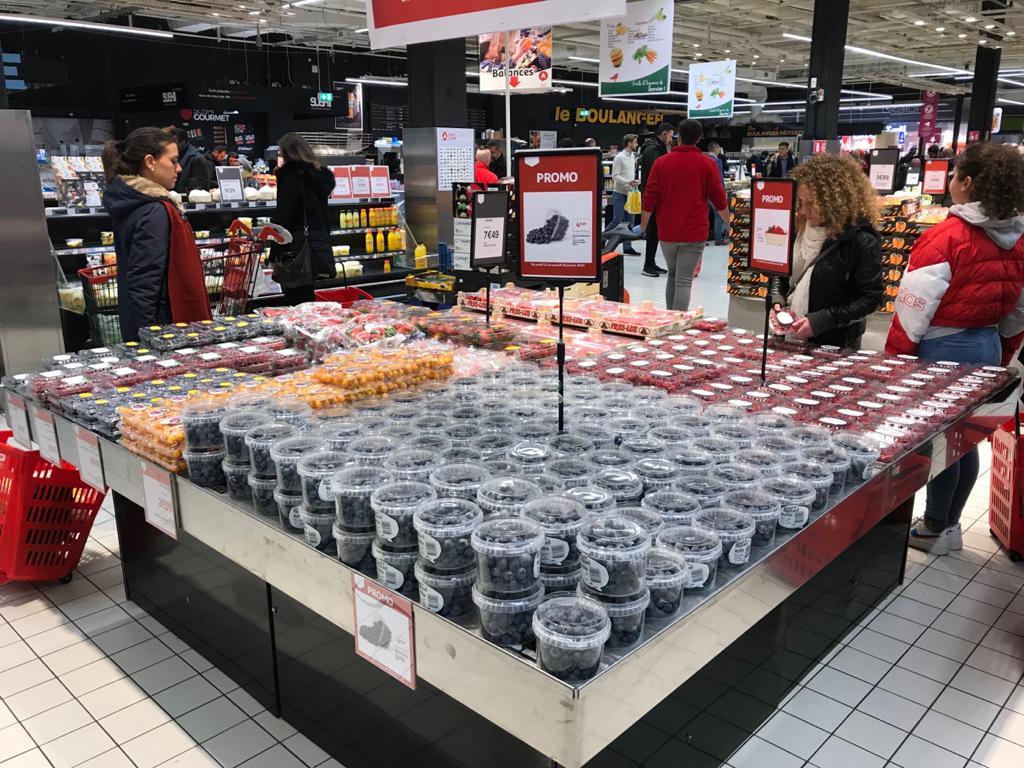The patented Florida Pearl™ pineberry (FL 16.78-109) is a newcomer to the U.S. berry market in the past two years. It has appeared in stores under several brand names, including Pinkaboo and Berry De Blanc.
THE CHARACTERISTICS OF THE FRUIT
This variety of pineberry has white flesh inside and out, with a pink tinge when ripe. The seeds also turn bright red when ripe, giving this fruit a color combination similar to that of a reverse red strawberry. The texture of Florida Pearl™ is somewhat softer than red strawberries, and the flavor is characterized by low acidity and a subtle pineapple aroma.
The fruits are harvested in 10-ouncesingle-layer clamshells (about 280g) to offer a distinct package that comes with a distinct look and taste. The hope is that, in time, they will establish themselves as the fifth berry in U.S. supermarkets, along with red strawberries, blueberries, blackberries and raspberries.

Pineberries are essentially white strawberries and belong to the same species as the red strawberries we all know and love. White strawberries exist in nature, and in recent years breeders have exploited these forms by crossing them with modern red strawberries.
The source of the white color of Florida Pearl™ comes from Japan, where white strawberries have been prized for several years. The first cross between the Japanese source and red strawberries was made in 2012. These first seedlings had small fruit and low yield, but after a second cross with red strawberries in 2016, the resulting plants had more typical fruit size and yield, but with a white color. Florida Pearl™ was commercialized by the University of Florida (UF) Strawberry Breeding Program in 2020.

FUTURE PROSPECTS
During the 2021-22 season, about 150 acres were cultivated in Central Florida. Similar acreage is being cultivated in California this summer to ensure availability closer to the year. For the next season, the area planted in Florida is expected to double, with about 300 acres. The yield has been about 75 percent of that of Florida Brilliance, the main red variety. It also has a somewhat later yield, with a slower start to the season in December. Nevertheless, the variety has been profitable due to rapid retail acceptance and relatively high prices.

Currently, it is exclusive to Florida companies, as are all UF strawberry varieties in the first three years after marketing. However, a limited number of trials have been authorized by the Florida Strawberry Growers Association(FSGA). In 2023, the three-year window of Florida exclusivity will close and Florida Pearl™ will be more widely available.
Growers interested in planting pineberry in the fall of 2023 with the intent of supplying fruit to retail supermarkets should contact the FSGA to discuss a growing license. Initial trials have been conducted in high tunnel production systems with good success. As a result, Florida Pearl™ is recommended for both open-field and high-tunnel production.
Looking ahead, UF's strawberry breeding program continues to develop new pineberry varieties, with FL selection 18.52-66 to be commercialized in 2023. Breeding efforts will continue to focus on flavor and quality, while also aiming to increase earliness and yield to levels closer to those of major red strawberry varieties.
Source: Specialty Crop Industry
Photo: FSGA












